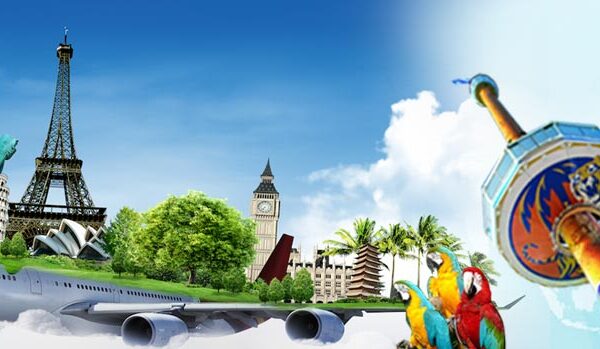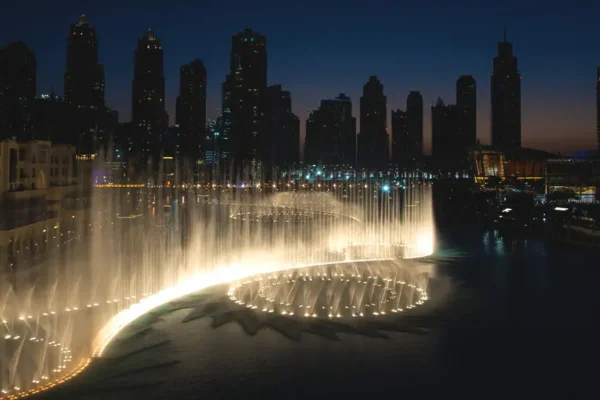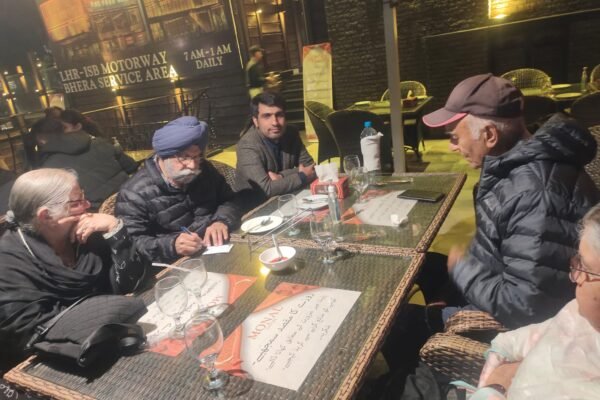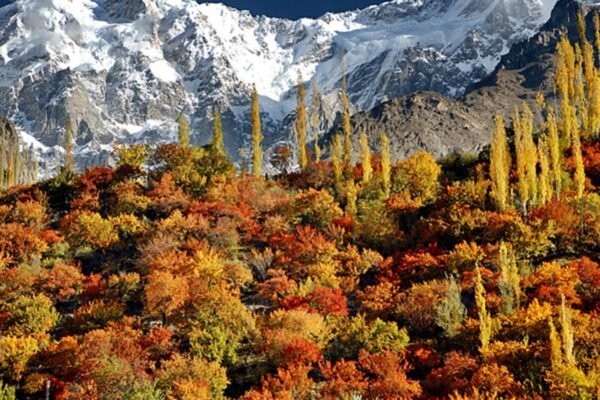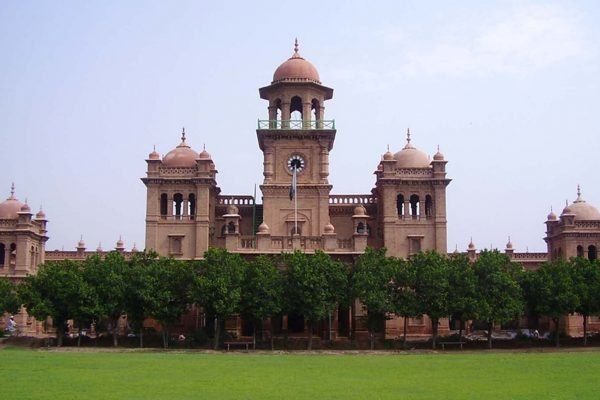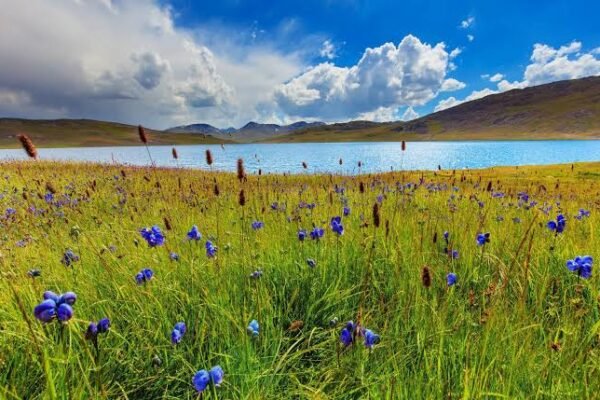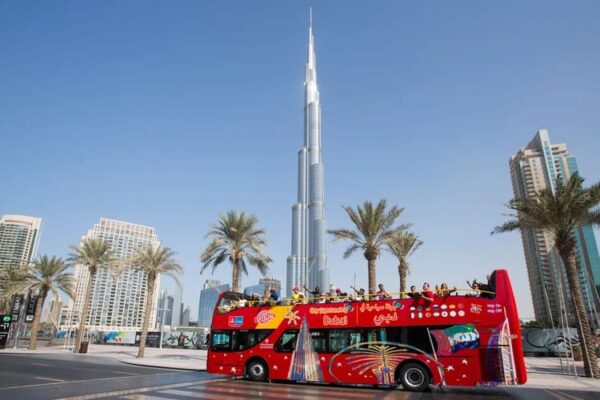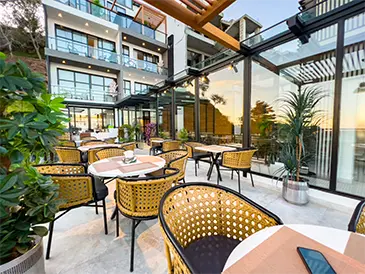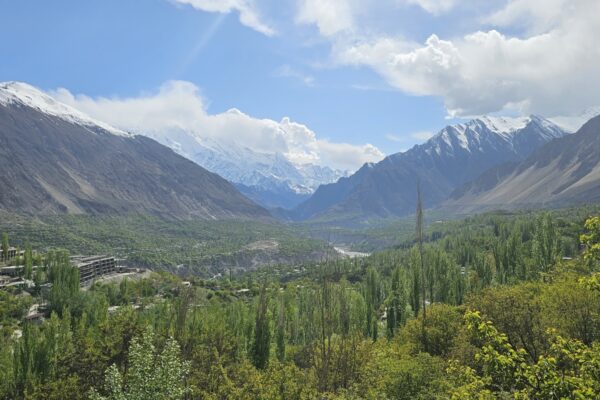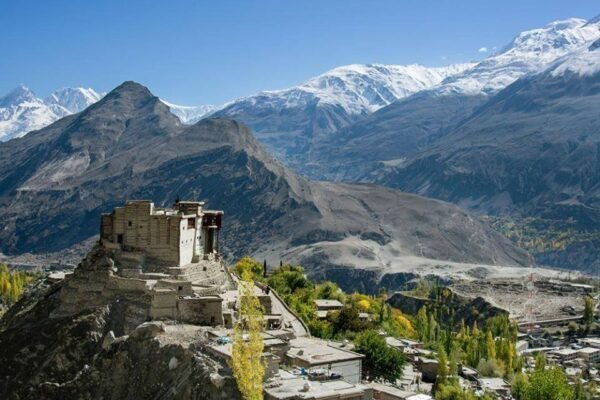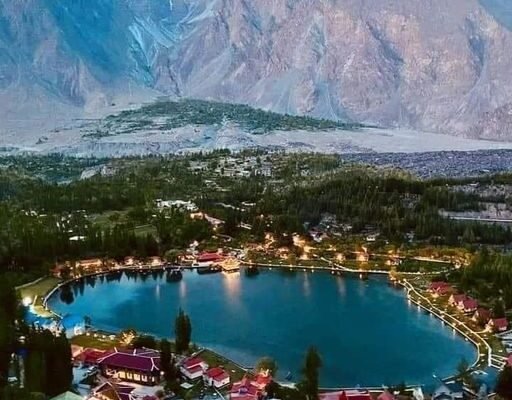Pakistan Travel Guide-Everything About Pakistan
Pakistan Travel Guide
The land where the Islamic Republic of Pakistan is situated today had been a seat of world’s leading Civilizations from the time immemorial. There is plenty of evidence from the pre-historic and historic period to support this argument, e.g. fossil jaws of apes, circa 14 millions years old found from Pothohar. They belong to a species named “Sivapithecus Pakininsis”, said to be the ancestor of Man. A 2 million years old earliest stone hand axe. Now on display in Islamabad Museum, Islamabad.
The legacy of our predecessors at the time of our independence, on August 14, 1947, came to us as a treasure which may be called as Pakistan’s national heritage. So rich and diversified is this heritage that Pakistani nation can be proud of its glorious past, be Islamic, Post Islamic or pre-Islamic period as far back as pre-historic times. No other country of the world can produce the treasure of by gone days as can be found in Pakistan.
land Pakistan (The pure Land) be it called Pakistan or be it (Sindu Sapta the real India ) has probably been the most sought after land in the history. From the King Darius of Persia, the Alexander of Macedonia and numerous others have marched here in quest of this land. There has been lot of culture changes in this soil.
From the mighty stretches of the Karakorams in the North to the vast alluvial delta of the Indus River in the South, Pakistan remains a land of high adventure and nature. Trekking, mountaineering, white water rafting, wild boar hunting, mountain and desert jeep safaris, camel and yak safaris, trout fishing and bird watching, are a few activities, which entice the adventure and nature lovers to Pakistan.
Pakistan is endowed with a rich and varied flora and fauna. High Himalayas, Karakoram and the Hindukush ranges with their alpine meadows and permanent snow line, coniferous forests down the sub-mountain scrub, the vast Indus plain merging into the great desert, the coast line and wetlands, all offer a remarkably rich variety of vegetation and associated wildlife including avifauna, both endemic and migratory. Ten of 18 mammalian orders are represented in Pakistan with species ranging from the world’s smallest surviving mammals, the Mediterranean Pigmy Shrew, to the largest mammal ever known; the blue whale.
Today India boasts to be “India of the past” while it was known as Deserta Incognita (Un Known Desert) in the past. Pakistan is the real old India that world should come to see. This is where Moen Jo Daro of Indus civilization is, This is where the mighty river Indus runs, This here where Buddhism was developed, this is where Sanskrit was born, and this is where the the Alexander came.
The spectacular views of the mountains the green planes, colorful deserts and the mighty Indus river are just a few things that this country has been blessed with. We are also blessed with the oldest history of the world. When we look at the civilizations like Egypt, Mesopotamia and others our Indus civilizations looks way too far well developed and well planned. We are the first urban civilization where city planning existed. We are the people who had binary system of the weights and the most accurate one 5000 yes five thousand years ago.
Today people talk of taxes and hygiene and organic food and saving nature we have had these ideas in 2500 BC we had a tax system democracy and even a system which was most eco friendly and well aware of nature and was protecting it.
This is an open invitation to every one come visit Pakistan, please; don’t listen to media, don’t listen to advisories, this country is full of friendly folks, flora and fauna. Nature smiles here and sun pays its first homage here in Pakistan.Check Out Pakistan Tour Packages
The Cultural Heritage of Pakistan is spread over the centuries, starting from pre-historic times to the present day and which may be summarized in the following periods:
Million Years History Pakistan area :
- Indus Civilization:
- Gandhara Civilization:
- Islamic Period:
- Sikh Period:
- British Period:
- Post independence Period
Pakistanis a kaleidoscope of some of the most diverse natural beauty in the world; it’s a cradle of ancient civilizations and a ‘melting pot’ of religions and cultures. The World Economic Forum placed Pakistan among the top 25 per cent of global destinations for its UNESCO ‘World Heritage Sites.’
From the stretches of great mountain ranges in the north, to the vast alluvial delta of the Indus River in the south, Pakistan remains a land blessed with nature’s beauty and majestic mountains. With shining deserts and some of the world’s highest peaks, the country has myriad attractions for sightseers, skiers, trekkers and mountaineers. For those interested in white water rafting, trout fishing, jeep, camel and yak safaris and out of this world flora and fauna, Pakistan is the place to be. It’s a land that holds a reservoir of knowledge for archaeologists, historians, artists, teachers and anthropologists, and it contains contains deep religious heritage for pilgrims of various faiths and beliefs.
The British Backpacker Society (BBS) declared Pakistan as the world’s third best potential adventure destination for 2020. The year before, the BBS declared that ‘Pakistan tops the list of world’s best travel destinations’, describing it as ‘one of the friendliest countries on earth.’ A land of splendour, the landscape stretches remarkably from the high mountain ranges in the north to the plains and deserts of central Pakistan, and the Arabian Sea in the south. In addition to the natural beauty in the four provinces of Pakistan, the people are very hospitable and generous toward foreign tourists.
Five of the world’s highest mountain peaks
Pakistan’s mountain ranges include the famous Himalayas, Karakoram and the Hindukush. There are several high peaks in Pakistan, with the tallest being K2(at 8,611 metres), the second highest in the world. The country is blessed with five out of the 14 highest mountain peaks of the world. From April to September, domestic and international mountaineers throng the area.
Highest Trade Route in the World
The 806km Karakorum Highway constructed along the ancient Silk Road linking Pakistan to Chinais the highest trade route in the world. Additionally, the nearby Mintaka Pass lies along the fabulous ancient Silk Road that linked Europe to Asia and over which history’s most famous tourists once travelled. These include the Venetian trader Marco Polo in the thirteenth century (the wild Marco Polo sheep was named after him), the Chinese Monk Fe Hien in the fourth century, and Arab historian Al-Beruni in the eleventh century.
Punjab (Mughal era monuments and Gandhara Buddhist civilisation)
The Punjab province comprises rich agricultural lands, an extensive network of rivers and channels, shrines, ancient forts and gardens from the Mughal era. Over 2,000 years ago, the world famous Gandhara Buddhist civilisation flourished in northern Pakistan, with Taxila as the principal seat of Buddhist learning.
Balochistan (Mountain Ranges and Caves)
The Balochistan province is the largest in the country in terms of area. Besides being blessed with nature’s bounty of mineral resources, it also has immense natural beauty comprising mountain ranges, mines and a very long coastal belt, including the newly developed Gwadar Port. In Balochistan there are many caves for tourists to visit, including the Juniper Shaft Cave, Shahre-e-Roghan, the Murghagull Gharra cave, Mughall saa cave, and Pakistan’s naturally decorated cave, the Mangocher Cave.
Sindh (Moenjodaro, Karachi, Arabian Sea)
In the south, the province of Sindh also abounds in natural beauty. It is most famous as home to the ancient city Moenjo-daro (Indus Valley Civilisation), the commercial hub city of Karachi, plus its seaports and beautiful beaches, spread over hundreds of miles of coastline.
Khyber Pakhtunkhwa (Kaghan and Swat Valleys)
Again, Khyber Pakhtunkhwa is well known for its varying natural beauty, comprising some awe-inspiring valleys and mountains in the north, including the Kaghan and Swat valleys, and the famous Khyber Pass.
Northern areas (Gilgit, Hunza, Skardu)
Spread over 72,496 square km, the northern areas of Pakistan are as captivating and mesmerising in beauty as the other regions. Amid towering snow-clad peaks, several over 8,000 metres, the beautiful serene valleys of Gilgit, Hunza and Skardu are magnificent.
Forty skiers from 13 countries including Greece, Turkey, Ukraine, Hong Kong,the UKand Belgiumparticipated in the International Skiing Cup in Pakistan in February 2019 at Naltar, Gilgit Baltistan. The cultural patterns in this region are as varied and interesting as its topography.
Vegetation and Fauna
Pakistan is also rich in vegetation and fauna. With their alpine meadows and permanent snow line, coniferous forests down the sub-mountain scrub, the vast Indus plain merging into the great desert, the coastline and wetlands, the Himalayas, Karakoram and the Hindukush ranges all offer a remarkably rich variety of vegetation and wildlife including avifauna, both endemic and migratory. 10 of 18 mammalian orders are represented in Pakistan with species ranging from the world’s smallest surviving mammal, the Mediterranean Pygmy Shrew, to the largest mammal ever known, the blue whale.
Indus Valley Civilization
Through the centuries, waves of invaders and migrants settled down in the land that is now Pakistan, influencing the locals and slowly being absorbed among them. Modern Pakistanis are a blend of Harappan, Indo-Aryan, Indo-Iranian, Saka, Parthian, Kushan, White Hun, Afghan, Arab, Turkic and Mughal heritages. Thus, the region encompassing modern-day Pakistan is home to the oldest Asian civilisation (and one of the oldest in the world after Mesopotamia and Egypt), the Indus Valley Civilisation (2,500-1,500 BC).
Religious Tourism
Pakistan is a land of love and hospitality. A land of spiritual endowment, it is also the resting place of many spiritual saints from all religions, be it the sufi mystics of Islam; the Hindu Tiraths dating back to 3,000BC; the disciples of Buddha attaining ‘nirvana’ buried under the remains of Gandhara civilisation; or Baba Guru Nanak Ji, the founder of the Sikh religion who was born in 1,469AD at Nankana Sahib, about 72km north of Lahore. Pakistan has always whole-heartedly worked to preserve its historical sites — whether it’s a church, Gurdwara, temple, mosque, museum, tomb, fort or shrine.
Pakistan’s Buddhist Heritage
Born in the foothills of the Himalayas, Buddhism found avid followers, supporters and patrons in Gandhara, the Land of Fragrance. Pakistan became the custodian of rich collections of sacred relics and superb specimens of art and architecture from Buddhist civilisation. For example, the Buddhist ruins of Taxila are priceless treasures of immense interest to Buddhists and researchers around the world. Taxila became a centre of excellence when the first ever university was founded there in the 10th century BC.
Pakistan’s Christian Heritage
Thomas the Apostle came to present day Taxila in the first century AD. Pakistan has historical churches in various locations, and these religious buildings symbolise the spirit of a community and the cultural context of centuries. Our Lady of Fatima Church, Islamabad, Christ Church, Kotri, St Paul’s Church, Rawalpindi, Cathedral of the Sacred Heart of Jesus, Lahore, St. Patrick’s Cathedral, Karachi, Holy Rosary Church, Quetta, St Mary’s Cathedral Church, Multan, and St Luke’s Church, Abbottabad are just a of the few churches in Pakistan well worth visiting.
Pakistan’s Sikh Heritage
Sikhism was founded by Guru Nanak, who was born in Nankana Sahib, Pakistan. Since Punjab was the centre of activities for Sikh Gurus, and later the political power base of the Sikhs, there are numerous sites in Pakistan that are sacred to the Sikh community. Thousands of pilgrims visit these places from all over the globe.
Among the sacred shrines is Gurdwara Darbar Sahib, Kartarpur, near Lahore. Pakistan’s government opened the Kartarpur Corridor to allow visa-free access to Sikh pilgrims from India. In 2019, the government renovated and expanded Kartarpur Corridor to celebrate the 550th birth anniversary of Baba Guru Nanak, and it has thus emerged as a centre of interfaith harmony and a symbol of goodwill of the people of Pakistan for the Sikh community.
Gurdwara Panja Sahib, Hasan Abdal, Gurdwara Choa Sahib, Rohtas, Gurdwara Bhai Joga Singh, Peshawar, Gurdwara Sadhu Bela, Sukkur, and Gurdwara Dera Sahib, Lahore are just a few of the many Gurdwaras that are visited by thousands of Sikhs from around the world each year.
The Gurdwara has become the centre of the annual pilgrimage by Sikh communities the world over. All Gurdwaras and Sikh shrines in Pakistan have been declared sacred places and are meticulously maintained by our government. Pakistan International Airlines (PIA) offers special pilgrimage tours, and Pakistani embassies and consulates abroad issue expeditious pilgrimage visas for that purpose.
Saints, Sufis, and Shrines
Pakistan is a land of saints and sufis who preached amity, peace and universal love. Their teachings promoted religious co-existence, communal harmony and tolerance in society, which is why there has always been communal harmony in Pakistan. This provides further opportunities for religious tourism in the country.
History reveals that various Sufi saints have bestowed Pakistan with messages of adoration and peace to promote Islamic virtues. Pakistanis consider the country to be blessed as the resting place of Saints in the Shrines of Data Ganj Bakhsh Hajveri, Lahore, Hazrat Abdullah Shah Ghazi, Karachi, Hazrat Lal Shahbaz Qalandar, Sehwan Sharif, Sachal Sarmast, Khairpur, and Hazrat Bahauddin Zakaria, Multan.
Pakistan’s Top Tourist Attractions
1. The name Pakistan derives from two words, “Pak,” which is Persian for holy, clean or pure, and “istan” derives from the Hindi word “isthan,” which means a place.
2.Pakistan has six designated UNESCO World Heritage sites: the archeological ruins at Moenjodaro; the Buddhist ruins of Takht-i-Bahi and neighboring city remains at Sahr-i-Bahlol; the fort and Shalamar Gardens in Lahore; the monuments at Makli; Fort Rohtas; and the ancient ruins of Taxila.
3. Pakistan has the world’s largest contiguous irrigation system, according to the United Nations.
4. The world’s first PC virus was created by two Pakistani brothers. Basit Farooq Alvi and Amjad Farooq Alvi created “Brain,” which was discovered in 1986 and targeted IBM PC platforms.
5. The Karakoram Highway is the world’s highest paved international road, according to Travel+Leisure magazine. The 800-mile highway connects Pakistan to western China, and reaches a maximum height of 15,300 feet.
6. Speaking of heights, the ATM at the world’s highest elevation belongs to the National Bank of Pakistan and sits in the Khunjerab Pass, in Gilgit-Baltistan. It was established in November 2016 and is 15,397 feet above sea level.
he Islamic Republic Pakistan is situated between the Karakoram mountain range, the Himalayas and China in the northeast, Afghanistan in the northwest, Iran in the southwest, the Arabian Sea in the south, and India in the east.Formerly part of the British Empire in India,
Within Pakistan’s landscape, there is the flat fertile Indus plain in the east, nurtured by the Indus, the country’s longest river and a key water resource. Pakistan’s north is mountainous. The nation’s highest mountains are the K2 in the Karakoram Range and the Nanga Parbat, the ‘Naked Mountain,’ in the Himalayas in Gilgit-Baltistan. Pakistan’s largest and least populated province is Balochistan in the southwest; the region includes the Balochistan Plateau and the Sulaiman Mountains.
The country occupies an of 796,095 km²;The fifth most populous country in the world has a of more than 22.3 million people (in 2021).Its capital is Islamabad. The largest port, city and business capital is Karachi. Pakistan’s second-largest city is Lahore .Other major Pakistani cities are Faisalabad, Rawalpindi, Multan, Gujranwala, Hyderabad (Pakistan), Peshawar, and Quetta.Spoken are Urdu (a form of Hindustani), English (both official), Punjabi, Sindhi, Dari, Balochi, and Pashto.Main religion is Islam (96%).

